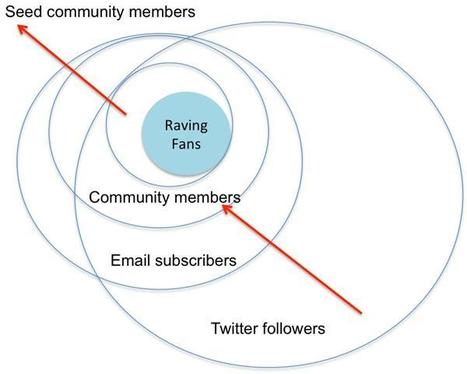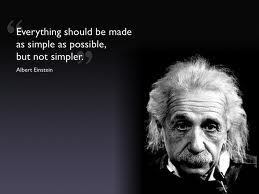 Your new post is loading...
 Your new post is loading...
We shocked a SEO Meetup suggesting 90% curation to 10% content creation. This deck explains why you MUST curate content. Content curation is a CSF (Crtical Success Factor) for online marketing.
7 Reasons You Must Curate Content
* Can't Create Sustainable Online Community Without Curating.
* Reach.
* Costs.
* Digitally Listening (is different).
* Authority.
* Tribes.
* Sustainable Online Community (so important its worth two listings).
Content curation is how you TEST and so protect your site's content creation. Content curation lowers your content creation costs and insures your current SEO ranks. Bet you agree, after flipping through this Hailku Deck (slides) content curation is a CSF (Critical Success Factor) for digital marketing.
Promise to follow with a deck on our favorite tools for content curation with @Scoop.itat the top of the list.
Via Martin (Marty) Smith
The future of marketing isn’t social media in the the way we think social media is Facebook or Twitter.
Via The Digital Rocking Chair
Tasked with creating a corporate page for Bloomberg, frog had to figure out the central theme of all its myriad businesses: Data, which they then used as a clever bit of branding. The idea is that Bloomberg, in all of its businesses, provides data and information. So why not use that data as the actual branding itself..?
Via Lauren Moss
This guest post is by Neil Patel of KISSmetrics. Google+ had a hot start, but has since cooled down. For ... Lots of good suggestions - here's the takeaway: Whether Google+ takes off or not, you can still use it to accomplish many productive and profitable things for your business. Besides, in the long run I believe that Google+ will play a large part in Google’s search algorithm, and when it does you’ll be ahead of the game! What productive ways are you using Google+ to promote your business, your blog, and yourself? Selected by Jan Gordon covering "Google+ Watch" Read full article here: [http://bit.ly/s0upHV]
Via janlgordon
From the article intro: The success of social networks and the move to socialise many others aspects of the web – from content and search to deals and commerce – has captured the imagination of analysts, content creators and brands. Those best positioned to monetise these changes, however, are developing strategies that extend beyond social networks built on who-knows-who to those built on shared interests: so-called "communities of interest". "It's no longer just social media that's social any more – all media is becoming social thanks to the maturation of creative tools and digital distribution," says Troy Young, president of SAY Media. Technology has democratised publishing. This, in turn, has resulted in a new breed of media businesses that see themselves more as curators of content rather than owners. New technology is creating new opportunities to socially interact and is also enabling end users to become their own content curator... [read full article http://j.mp/oWuqnC]
Via Giuseppe Mauriello, Robin Good, janlgordon
This piece was written by Oscar Berg (@oscarberg) for CMS Wire and curated by JanLGordon covering her topic "Content Curation, Social Media and Beyond" on Scoopit. I was especially drawn to this article in relation to Scoopit, as I know from discussions I've had with Guillaume Decugis, this very much speaks to his vision of what this platform could and should become. **By sharing content and helping each other source, review and curate topics of interest, we stay informed, expand the conversation and contribute to others. It's like a collective intelligence of sorts. **An essential part of community building is giving others credit if you repost their content and thanking them for posting it. Intro: "Since the dawn of time, primates have relied on social networks to help the whole group with their environments. This of course applies to humans and our enterprises as well." Here's what caught my attention: Understanding the Dynamic of Your Networks Today we also have information technologies such as social software that anyone can use to build, nurture and make use of their informal networks. **And as the informal networks become visible, they become more usable to both individuals and organizations **as we can better understand their dynamics and how to make proper use of them. **In an environment where change is business as usual and being **more responsive, agile and innovative is the only way to adapt to the environment, who can afford not to understand the dynamics of networks and harness their power with the use of social technologies? Why and for how long? http://www.cmswire.com/cms/social-business/dont-underestimate-the-power-of-networks-012890.php
Via janlgordon
I posted this a few weeks ago, I'm sure not everyone saw it and it is definitely worth posting again. Lots of information and strategy. Nine ways to make curation work for your brand. Become a Content Curation King Sean Carton | August 29, 2011 "Curation" is a buzzword (even if it isn't technically a word…unless you count the 14th century French definition meaning "to cure") that's smokin' up the interwebs these days. Launching into the blogosphere virtually from nowhere in 2009, it's now one of those terms that's essential to any digital marketer on the cutting edge (or for anyone who wants to sound like one). Curation has now come to mean the act of sorting through the vast amounts of content on the web and presenting it in a coherent way, organized around a specific topic(s). However, unlike automated services (such as Google News), the essential difference of curation is that there's a human being doing the sifting, sorting, arranging, and publishing. Just as a museum curator must decide which artifacts to display during an exhibition, an online curator decides what information available online is appropriate and relevant to her audience. Making curation work for your brand is a lot easier said than done. As countless would-be content curation kings (and queens) have found out, just gathering a lot of links together doesn't guarantee anything except that you'll spend a lot of time curating links. You need to commit resources to both curation and promotion if you're going to be successful. And that's just the first step. To truly succeed as a curator, you need to think like a curator (not just an aggregator) and keep the following in mind: http://www.clickz.com/clickz/column/2104954/content-curation-king
Via janlgordon
Absolutely fascinating! Intro: In 2008 the number of devices connected to the Internet surpassed the number of people connected, and in 2020 there will be 50 billion things connected, 7 times the world’s population, according to Dave Evans of Cisco. The infographic below highlights some of the key features of the Internet of things, including the pace of growth, how external data can be aggregated so that your alarm clocks, cars, and coffee makers make decisions to fit with your schedule, and that some cameras and computers are now just a cubic millimeter. An amazing statistic is that by end of 2011, 20 typical households will generate more Internet traffic than the entire Internet in 2008. That is slightly unbelievable, and I would like to know how they define ‘typical’ and what data is generated for Internet communication. However it is important to recognize that the Internet of things is one of the most important ways to understand our connected future. Pervasive connectivity, and the amazing things we will be able to do with that, will shape our lives. http://rossdawsonblog.com/weblog/archives/2011/09/the-internet-of-things-will-dwarf-the-internet-of-people.html
Via janlgordon
This is a glitch in search today but someone is building a better mousetrap and we just have to live with the noise for the time being. Hopefully those of us who curate are helping people find good, relevant pieces on a particluar topic as things evolve. Intro: Like it or not we are a search driven society. Thus this post could have easily been titled, "Content for content's sake" or "Crappy content for search engines", or "The difference between worthle. Good content takes time. Good content that we may value, may take even longer to produce and in some cases may take longer to find. Why? If the person who has authored it has not written equally for search engines as well as for their audience, and if it doesn’t possess the ”right” linkage and properties that meet Google’s search algoritham-it may fall quietly by the wayside. Thus we have more noise than signal and more of a glut of worthless, search friendly content. http://directmarketingobservations.com/2011/08/15/search-quality-content-is-an-oxymoron/?blogsub=confirming#subscribe-blog
Via janlgordon
|
"Changez de paradigme", comme dit Frédéric Abella. Je partage entièrement son point de vue. Morceaux choisis: "Vous êtes face à 7 milliards de médias. Vous pouvez essayer de contrôler quelque chose sur 1 000 médias. Vous pouvez donner des consignes en interne, écrire des procédures, désigner les rares personnes autorisées à parler aux médias. Vous ne contrôlez plus rien avec 7 milliards de médias. En mai 2013, Mike Jeffries le patron d’Abercrombie ne pensait certainement pas qu’une interview de 2006 allait conduire à une vidéo YouTube de Greg Karber, contraire à sa politique et aux valeurs de sa marque, vues plus de 7 millions de fois en quelques jours."
Stories are powerful. We put together this little demonstration to inspire our people make more emotional connections. I love his short video about why stories work so well to make information meaningful and memorable! I share it with you today for 2 reasons: It looks like it would be a very simple video technique you could use for sharing your own business stories. If you need to demonstrate the power of storytelling in your work, share this video! Hope this video gets your week off to a roaring start.
Via jdprickett, Elena Elliniadou
This a great blog post from Rian van der Merwe , describing the noise you can find on the web now, and especially content just created for SEO purposes or advertisers. As many, Rian is tired of it. Rian speaks for many of us who are overwhelmed, overloaded with content that gives us no value at all. This is the problem "I used to believe that if you write with passion and clarity about a topic you know well (or want to know more about), you will find and build an audience. I believed that maybe, if you’re smart about it, you could find a way for some part of that audience to pay you money to sustain whatever obsession drove you to self-publishing"' Here's what caught my attention:
****The wells of attention are being drilled to depletion by linkbait headlines, ad-infested pages, “jumps” and random pagination, and content that is engineered to be “consumed” in 1 minute or less of quick scanning – just enough time to capture those almighty eyeballs[2]. And the reality is that “Alternative Attention sources” simply don’t exist. The Scoopit team agrees! My input: ****The Opportunity: This is the time for all good curators to come forward - 2012 will be the year of the content curator - **Know your audience **Know their pain points **Find and select the best content, add your own opinions, information or anything that will provide more value for your audience **Select only the best content, don't just aggregate links that add to the noise **Become a trusted resource - many opportunities will come to you, it's your time to shine Curated by Jan Gordon covering "Content Curation, Social Media and Beyond" Read full article here: [http://bit.ly/tF0opI]
Via axelletess, janlgordon, Robin Good
In the latest Method 10x10 piece, principal Marc Shillum argues that branding lies in creating patterns that add up to a whole, rather than a single, monolithic message.
Brands today exist in multiple mediums, defined by multiple voices. The media brands inhabit is iterative, with no beginning, no end, and little permanency. In that context, adherence to a big idea and endless repetition of centralized, fixed rules can make a brand seem unresponsive and out of step with its audience. But without repetition, how does a brand create consistency? And without consistency, how does a brand maintain value?
Brands as Patterns We all know that brands are increasingly accessed digitally, but a less considered consequence is that the interface through which a brand is accessed has become a primary identity element...
Via Martin Gysler
This post is from Mashable and it has valuable information for your brand marketing strategy. It tells you what your social consumer is most influenced and much more. "This is an excellent article and a great analysis of the new age, social consumer segmentation. says Chris Abate and I must say I agree with him! The emphasis on search as being still the main way people research products might be a reality but it’s fast being challenged by social, word-of-mouth referrals from the people we trust must in our lives, our friends/family. The advent of Sponsored Stories in Facebook’s new plans will continue to erode the dominance of search as the means by which people research products as prep for purchases." Intro: If you’re buying a car, do you check Facebook? Or do you read up on Kelley Blue Book values and scour the company website for every spec, from horsepower to miles per gallon? What about music — do you check Top 40 radio charts or scope out what your Facebook friends are actually listening to on Spotify? Social media has infiltrated the purchasing funnel, helping consumers make informed decisions, from what to have for lunch to where to go on vacation. Depending on the decision, sometimes you turn to your social graph, and sometimes you turn to Google. ****So, as a brand marketer, you want to know what online channels you should be targeting in order to reach the perfect audience for your product. But regardless of what kind of consumer you’re trying to reach or what you’re selling, ****your SEO better be top notch — search is the most important influence on the web. The infographic, featuring data from M Booth and Beyond, analyzes the differences between high and low sharers and various purchasing decisions, helping brands to understand how should be targeting consumers. You'll find some amazing statistics this is definitely worth your time. Curated by JanLGordon covering "Content Curation, Social Media & Beyond" http://mashable.com/2011/10/25/social-consumer-sharing-infographic/
Via janlgordon, juandoming
This is a great article on curation from Finger Tips Music. There is much confusion out there, some people say content curation is just a buzz word, it is so much more and what I've highlighted below is just the tip of the iceberg. Curated by JanLGordon covering Content Curation, Social Media & Beyond Here's what caught my attention: Curating is not just filtering ****Curators must keep selections to a rigorous minimum. **One long-running model is the site Very Short List, which selects but one thing a day to inform you about. ****The difference between filtering and curating is, however, more than quantitative. ******A curator aims to present web content in a manner that removes it from the medium’s inherent endlessness as well as its relentless robotic-ness. ****** This can be done only with the care and attention of an individual intelligence. *******A curator, alive to context and nuance, has a voice, a sensibility, a vibe; there is something inherently idiosyncratic about curating. http://www.fingertipsmusic.com/?p=7732
Via janlgordon
Not all that long ago (think 2002), people would think you were crazy when you talked about **the powerful intersection of community and content. Online communities? Those died in the dot com bust. Today, marketing professionals are starting to come around, but they still have a ways to go. **Few people fully grasp how the interplay between content and community can change how organizations function internally and externally. Previous articles in this series have addressed content, so let's now turn our attention to community. Today, the role that community can play in the marketing and communications process is woefully misunderstood. Many organizations are not actively involved in community efforts, and those that are tend to focus on community for three reasons.: Support: Enabling customers and advocates to support and inform each other, providing self-serve customer service, or offering support via social network monitoring (e.g., Comcast's efforts via @comcastcares)Reputation: Intersecting with communities, social network presences of interest, and influencers in an effort to build reputation Research: Using small private communities like a marketing petri dish—a closed, controlled space where customers can be studied **The real value of customer communities, however, is quality and efficiency—efficiency of reach, feedback, communication cycles, and amplification. Read more: http://www.marketingprofs.com/articles/2011/6007/how-communities-are-changing-marketing-and-four-community-building-lessons#ixzz1ZBDLVebx
Via janlgordon
Einstein said "everything must be made as simple as possible, but not one bit simpler". That concept, often tied to Occam's Razor, is very powerful when looking at new theories and models. I decided to apply this process to social business and in so doing something emerged that I believe is very useful in understanding social in the enterprise. In a document that we published last year called The Social Business Framework, we explored the two key levers that can be applied to socialize business, content and community. A year later and after quite a bit of research on social business, I now believe that there was a missing element beyond content and community that is critical for building a complete enterprise social strategy. This third element is collaboration. http://www.enterpriseirregulars.com/41540/the-three-cs-of-social-business/
Via janlgordon
Great post written by Eric Brown for Social Media Explorer - This is what caught my attention: Curation — the act of human editors adding their work to the machines that gather, organize and filter content. “Curation comes up when search stops working,” says author and NYU Professor Clay Shirky. But it’s more than a human-powered filter. “Curation comes up when people realize that it isn’t just about information seeking, it’s also about synchronizing a community.” Part of the reason that human curation is so critical is simply the vast number of people who are now making and sharing media. “Everyone is a media outlet”, says Shirky. “The point of everyone being a media outlet is really not at all complicated. It just means that we can all put things out in the public view. http://www.socialmediaexplorer.com/social-media-marketing/is-content-curation-the-new-community-builder/
Via janlgordon
This is a glitch in search today but someone is building a better mousetrap and we just have to live with the noise for the time being. Hopefully those of us who curate are helping people find good, relevant pieces on a particluar topic as things evolve. Intro: Like it or not we are a search driven society. Thus this post could have easily been titled, "Content for content's sake" or "Crappy content for search engines", or "The difference between worthle. Good content takes time. Good content that we may value, may take even longer to produce and in some cases may take longer to find. Why? If the person who has authored it has not written equally for search engines as well as for their audience, and if it doesn’t possess the ”right” linkage and properties that meet Google’s search algoritham-it may fall quietly by the wayside. Thus we have more noise than signal and more of a glut of worthless, search friendly content. http://directmarketingobservations.com/2011/08/15/search-quality-content-is-an-oxymoron/?blogsub=confirming#subscribe-blog
Via janlgordon
|



 Your new post is loading...
Your new post is loading...





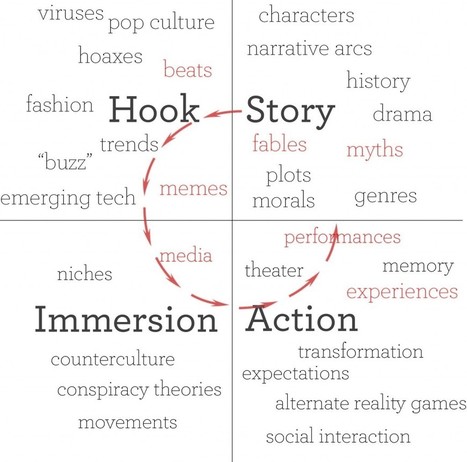
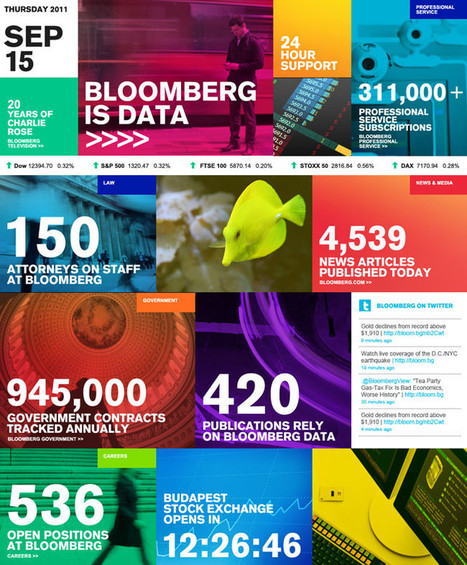


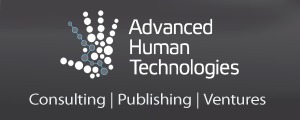








![Social Consumers and the Science of Sharing [INFOGRAPHIC] | information analyst | Scoop.it](https://img.scoop.it/ywVdN2O8fBzCSBKcjyIAaDl72eJkfbmt4t8yenImKBVvK0kTmF0xjctABnaLJIm9)
